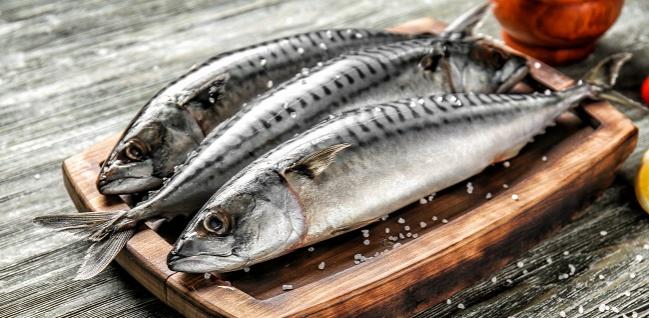Biggest Benefits of Regular Fish Consumption Lie in Secondary Prevention
A large meta-analysis saw a “neutral” impact of twice-weekly fish in people without CVD, but does that pass the sniff test?

Eating two servings of fish per week lowers the risks of major cardiovascular disease and all-cause mortality in patients with preexisting vascular disease but does not appear to benefit for those without, according to a new analysis combining multiple large studies.
In the secondary-prevention setting, eating 175 grams of fish per week lowered the risk of major CVD events, a composite endpoint that included MI, stroke, congestive heart failure, or sudden death, by 16% and all-cause mortality by 18% when compared with eating just 50 grams of fish per month.
“A similar pattern of results was found for sudden cardiac death, with significant protective associations observed among patients with vascular disease, but neutral in general populations without vascular disease,” Deepa Mohan, PhD (Madras Diabetes Research Foundation, Chennai, India), and colleagues report in their paper published March 8, 2021, in JAMA Internal Medicine. “Furthermore, the data available from one study on types of fish suggested that oily fish but not other types of fish were associated with greater benefits.”
Despite not seeing any benefit in the primary-prevention setting, experts stress that people without prevalent CVD shouldn’t discount the heart-healthy effects of eating more fish. Samia Mora, MD (Brigham and Women’s Hospital, Boston, MA), who was one of the investigators in the National Institutes of Health-funded VITAL trial, noted that even in this latest analysis, which included patients from PURE, ONTARGET, TRANSCEND, and ORIGIN, there were nonsignificant trends toward a lower risk of major CVD events in those without prevalent disease.
“Many, many observational studies across numerous populations have shown that with a greater intake of fish there is a lower risk of cardiovascular disease, particularly coronary events,” Mora told TCTMD, citing such analyses from the Physicians Health Study, Nurses’ Health Study, and Cardiovascular Health Study, among others. Other data, including a recent observational study of the UK Biobank cohort, showed that fish oil supplements rich in omega-3 fatty acids helped prevent cardiovascular disease and mortality in a primary-prevention population. Even in the VITAL study, which showed there was no benefit to marine omega-3 fatty acid supplementation for the primary prevention of major CVD events, there was a significant 28% reduction in the risk of MI and a 17% lower risk of coronary heart disease, said Mora.
“That’s why I don’t want the message to imply that patients without prior CVD won’t benefit from a greater consumption of fish,” said Mora. “I think the point is that greater fish consumption is related to a lower risk [of major CVD] in those with prior cardiovascular disease, and based on this study, we can’t really deduce much about those without prior CVD because there was even a trend towards a benefit, although it wasn’t significant. Many other studies in the past have shown that among those with no prior CVD, there was a benefit, and it was a graded dose-response.”
In an editorial, Dariush Mozaffarian, MD, DrPH (Tufts University, Boston, MA), echoes those thoughts, stating that this present analysis “does not alter the large body of prior observational evidence supporting the cardiac benefits of fish intake in the general population.”
The World Health Organization currently recommends people eat at least two servings of fish per week to prevent the onset of chronic disease, while the American College of Cardiology/American Heart Association primary-prevention guidelines recommend fish as the preferred animal protein as part of a Mediterranean-type diet.
Pooling Three RCTs, One Cohort Study
In this study, researchers pooled data from the three randomized trials and the PURE epidemiologic cohort. Of the four, PURE was the largest study with 147,645 participants, of whom just 5.3% had a history of cardiovascular disease. ONTARGET, a hypertension study, included patients with vascular disease or diabetes, TRANSCEND looked at use of an ARB in patients with cardiovascular disease, and ORIGIN included patients with cardiovascular risk factors plus impaired fasting glucose or diabetes.
In total, 191,558 participants (mean age 54 years; 47.9% men) were included in the analysis. The mean duration of follow-up was 7.5 years, ranging from 4.5 years in ONTARGET and TRANSCEND to 9.1 years in PURE. Fish intake varied considerably across regions, with a median intake of 4.2 g/week in South Asia to 468 g/week in Southeast Asia.
In the PURE study alone, consuming more than 350 g/week of fish, roughly four servings, was not associated with a significantly lower risk of the composite endpoint of major CVD or mortality when compared with those who ate less than 50 g of fish per month. In multivariate-adjusted analysis, eating 175-350 g/week of fish was linked a reduction in the risk of major CVD events but eating more than 350 g per week was not. When stratified by baseline disease, there were no significant associations between fish intake and the risk of CVD or death in patients with or without CVD.
Within ONTARGET and TRANSCEND, both of which included patients with vascular disease, eating 175 grams of fish per week was associated with a significant 12% lower risk of major CVD or total mortality, as well as nonsignificant trends toward less CVD and non-CVD mortality, when compared with eating just 50 g of fish per month. In ORIGIN, eating two servings of fish per week was associated with a 23% lower risk of both major CVD and all-cause mortality compared with those who ate fish infrequently. In this last study, eating fish with higher amounts of omega-3 fatty acids conferred a lower risk of major CVD events.
Pooling the three studies of patients with vascular disease (or at high risk for vascular disease), eating at least 175 g of fish per week was associated with significantly lower risks of major CVD (HR 0.84; 95% CI 0.73.-0.96) and all-cause mortality (HR 0.82; 95% CI 0.74-0.91) when compared with eating just 50 g/week. There was no additional benefit among those who ate 350 g of fish per week.
From a statistical standpoint, Mora said the present study doesn’t make it clear whether the presence of prior CVD modified the association between fish intake and outcomes given that the P for interaction wasn’t published. More broadly, she also noted that all observational studies carry limitations, especially dietary studies, given the potential for confounding and bias.
Primary-Prevention RCT Unlikely
The researchers point out that there are no primary-prevention studies addressing fish intake and CVD outcomes. While some prospective cohort studies in healthy people have shown there’s a benefit, Mohan and colleagues note that other studies haven’t. In PURE, which is a widely diverse cohort of people across many demographic regions, they did see a benefit of fish consumption in healthy people from China and Africa.
“Taken together, the results suggest that higher fish consumption may be modestly associated with CVD outcomes or mortality in generally healthy populations,” Mohan and colleagues write, noting that that benefit appears mostly relegated to preventing coronary heart disease.
Mozaffarian makes a similar point in his editorial, stating that the “cumulative evidence from prospective observational studies, randomized clinical trials, and mechanistic and experimental studies, modest fish consumption appears to have some cardiac benefits.” All adults should aim to eat at least two servings per week, he writes, noting that the biggest bang for the buck may be found in nonfried, oily fish because it can contain up to 10 times the amount of omega-3 fatty acids as white fish.
To TCTMD, Mora said that a randomized trial looking at fish consumption for primary prevention would be near impossible to pull off. Nutritional studies, in general, are notoriously challenging, let alone one in a healthy population that would need to be followed for many years—and maintain adherence to a prescribed dietary plan—to show any meaningful clinical differences. The PREDIMED trial, which included higher-risk patients without CVD, did show there was a benefit of the Mediterranean diet supplemented with mixed nuts or extra virgin olive oil, which are rich in polyunsaturated fatty acids, like fish. In the intervention arms, Mora noted that patients ate more fish than the low-fat control group, and also had a greater intake of vegetables.
“That likely also contributed to the benefit [seen in PREDIMED],” said Mora, referring to increased intake of fish and vegetables. “That’s probably the closest we’ve gotten in terms of a randomized trial. Fish intake was part of the Mediterranean diet intervention.”
In terms of recommendations, Mora asks patients, regardless of their CVD status, to follow a healthy dietary pattern aligned with the American Heart Association’s Life’s Simple 7 program. That includes vegetables, fruits, whole grains, beans, legumes, nuts, plant-based or lean animal protein, skinless poultry, and fish.
Michael O’Riordan is the Managing Editor for TCTMD. He completed his undergraduate degrees at Queen’s University in Kingston, ON, and…
Read Full BioSources
Mohan D, Mente A, Dehghan M, et al. Associations of fish consumption with risk of cardiovascular disease and mortality among individuals with or without vascular disease from 58 countries. JAMA Intern Med. 2021;Epub ahead of print.
Mozaffarian D. Fish, cardiovascular disease, and mortality—what is the global evidence? JAMA Intern Med. 2021;Epub ahead of print.
Disclosures
- Mohan and Mora report no conflicts of interest.
- Mozaffarian reports grants from the Bill & Melinda Gates Foundation, National Institutes of Health, and The Rockefeller Foundation and personal fees from Acasti Pharma, America’s Test Kitchen, Amarin Corporation, Barilla, Cleveland Clinic Foundation, Danone, GOED, and Motif FoodWorks. He serves on the scientific advisory board for Beren Therapeutics, Brightseed, Calibrate, DayTwo, Elysium Health, Filtricine, Foodome Inc, HumanCo, January.ai, and Tiny Organics. He reports royalties from UpToDate,





Comments